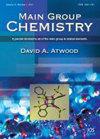Encapsulation of peroxidase on hydrogel sodium polyacrylate spheres incorporated by silver and gold nanoparticles: A comparative study
IF 1.3
4区 化学
Q3 CHEMISTRY, MULTIDISCIPLINARY
引用次数: 1
Abstract
The selectivity of biocatalysts based on enzymes, eco-friendly reaction systems, and strong catalyst performance is exceptionally compelling. For improving enzyme recyclability and stability, a good option that has been proved is immobilization. For enzyme immobilization, hydrogel sodium polyacrylate combined with nanoparticles is an interesting class of support matrices as compared to others. This study synthesizes and uses the cross-linked hydrogel sodium polyacrylate-decorated gold or silver nanoparticles (HSP/AuNPs or AgNPs) as immobilized support for peroxidase and FTIR characterizes it. The novel supports immobilized system properties enhanced biocompatibility. They have attained a greater immobilization yield (91% with HSP/AuNPs and 84% with HSP/AgNPs). The rest of the immobilized peroxidase activity, after 10 recurring cycles of HSP/AuNPs was 61% and HSP/AgNPs was 54% . The remaining activity of the immobilized enzyme onto HSP/AgNPs, after storing at 4°C for 6 weeks, was 73% and HSP/AuNPs was 75% of its initial activity. It was revealed that the optimum temperature for the free enzyme and the immobilized enzyme was 50°C and 50–60°C, respectively. For the immobilized enzyme, the optimum pH is 7–7.5, as compared to the optimum pH of free enzyme pH 6.5.过氧化物酶在银和金纳米颗粒聚合的聚丙烯酸钠水凝胶球上的包封:比较研究
基于酶的生物催化剂的选择性,生态友好的反应体系,以及强大的催化剂性能是非常引人注目的。为了提高酶的可回收性和稳定性,固定化是一个很好的选择。对于酶固定化,水凝胶聚丙烯酸钠与纳米颗粒相结合是一类有趣的支撑基质。本研究合成并使用交联水凝胶聚丙烯酸钠修饰的金或银纳米粒子(HSP/AuNPs或AgNPs)作为过氧化物酶的固定化载体,并对其进行了红外光谱表征。该新型支持固定化系统的特性,增强了生物相容性。它们获得了更高的固定化率(HSP/AuNPs为91%,HSP/AgNPs为84%)。经过10个循环后,HSP/AuNPs固定过氧化物酶活性为61%,HSP/AgNPs固定过氧化物酶活性为54%。在4℃条件下保存6周后,固定化酶在HSP/AgNPs上的剩余活性为初始活性的73%,HSP/AuNPs为初始活性的75%。结果表明,游离酶和固定化酶的最适温度分别为50℃和50 ~ 60℃。固定化酶的最适pH为7 ~ 7.5,游离酶的最适pH为6.5。
本文章由计算机程序翻译,如有差异,请以英文原文为准。
求助全文
约1分钟内获得全文
求助全文
来源期刊

Main Group Chemistry
化学-化学综合
CiteScore
2.00
自引率
26.70%
发文量
65
审稿时长
>12 weeks
期刊介绍:
Main Group Chemistry is intended to be a primary resource for all chemistry, engineering, biological, and materials researchers in both academia and in industry with an interest in the elements from the groups 1, 2, 12–18, lanthanides and actinides. The journal is committed to maintaining a high standard for its publications. This will be ensured by a rigorous peer-review process with most articles being reviewed by at least one editorial board member. Additionally, all manuscripts will be proofread and corrected by a dedicated copy editor located at the University of Kentucky.
 求助内容:
求助内容: 应助结果提醒方式:
应助结果提醒方式:


